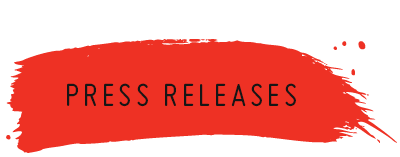- 5 FIFTEEN
- ACTEGA
- ACTEGA METAL PRINT
- ACTGreen
- ADOBE
- BALDWIN TECHNOLOGY
- BALDWIN VISION SYSTEMS
- BCN3D
- BESPOKE
- CONTIWEB
- CRON
- DIGITAL DOT
- DSCOOP
- FRONTLINE
- GALLUS
- GIRLS WHO PRINT
- GOSS
- HIGHCON
- HP
- INGENTA
- J-TECK3
- KIIAN
- MIMAKI
- PRESSTEK
- PURE DIGITAL
- QUADTECH
- ROTOLITO LOMBARDA
- SAi
- SCODIX
- SCREEN
- SOLIMAR
- TONEJET
- URW TYPE FOUNDRY
Adobe PDF Print Engine 7 Brings in-RIP Intelligence to Prepress Workflows
Accelerating Productivity and Automation by Embedding Prepress Intelligence Inside the RIP (Raster Image Processor)
Berlin, Germany — May 6, 2025 — Adobe today announced version 7 of Adobe PDF Print Engine. The new release includes several rendering innovations that have already been welcomed by leading Print OEMs and RIP solution providers who integrate Adobe technology into their prepress products. PDF Print Engine is the industry’s performance leader, and the new features can leverage the scalability of the Mercury RIP Architecture.
Fewer steps, smarter workflows – PDF Print Engine 7 integrates new functions into the rendering pipeline (inside the RIP), reducing the need for specialized skill sets, and eliminating separate prepress operations. Combining pre-RIP functions with in-RIP rendering results in fewer manual interactions, more automation, and faster production. These new capabilities will accelerate high-volume custom printing, web-to-print job submission, direct-to-garment printing, and a range of industrial and packaging workflows. Thirty years after the dawn of the PDF era, version 7 of the Print Engine demonstrates Adobe’s ongoing commitment to delivering the latest advances in imaging science to commercial printers, packaging converters, and manufacturers worldwide.
What’s new in Adobe PDF Print Engine 7
- in-RIP multicolor transparency blending. An industry first, this feature overcomes the challenging technical hurdles of transparency blending for ECG print jobs (Expanded Color Gamut). It blends transparency and separates plates for presses with CMYK plus any combination of inks, for example, Orange and/or Green and/or Violet (CMYK+OGV). Jobs that contain one or more transparent elements will take full advantage of the press gamut, enabling all images and graphics in the job to appear more vivid and attention-getting. This breakthrough feature will help to accelerate the adoption of multicolor ECG printing for digital, offset, and flexo production.
- in-RIP merging of variable product data. Consumer Package Goods (CPG) manufacturers need connected packaging to fight counterfeiting and track distribution logistics. This new feature will help to accelerate adoption of product authentication and to streamline production of simple direct mail. Performing real-time functions inside the RIP – the merging of dynamic content such as serial numbers/barcodes onto a static PDF template, while simultaneously stepping the resulting unique pieces – eliminates up to two sets of prepress activities, significantly reducing processing time while removing the need to generate and manage intermediate files.
- in-RIP rendering of Adobe Photoshop and Illustrator job files. Designers who use Illustrator and Photoshop sometimes submit jobs in native format instead of PDF. Most commercial printers accept and welcome such jobs, often from web-to-print channels. Now, prepress operations can eliminate the manual steps of opening the job in the design application and converting it to PDF. Built using proprietary technologies, the new capability will ensure Adobe quality reproduction of every job.
- in-RIP bleed generation. For jobs that will be trimmed but were submitted with graphics that stop at the trimline, a bleed can be generated as part of the rendering stage, eliminating the need for interactive pre-RIP remedies.
- in-RIP cutline expansion. For jobs that will be printed on a large format press, and finished on a cutting table, the perimeter cutline can be automatically modified to account for the thickness, angle, and pressure of the cutting blade/rotor/laser as well as the flexibility of the substrate, eliminating the need for manual preparation.
- in-RIP white mask generation for printing on metallic substrates. Designers often define a spot color swatch to represent metallic-looking elements in a job, even when the entire printing surface is metallic. The new feature builds on the white ink capabilities of Print Engine 6 to automatically generate a white ink mask from the metallic spot color plate. It will minimize waste/costs by reducing the coverage area and quantity of expensive white ink. The feature eliminates the need to perform this function post-rendering.
- New performance and scalability enhancements. Building on the robust and scalable architecture of PDF Print Engine, version 7 introduces new enhancements that take full advantage of available hardware (including SSDs) to boost the speed of caching, image resampling operations, and multithreaded trapping.
Availability
The beta release of PDF Print Engine 7 was made available to Adobe print RIP SDK licensing partners in April, and the final Gold Master edition will be distributed to them in August. Adobe expects that industry-leading OEMs and RIP vendors will begin to release products powered by version 7 in 2026.
New technology preview – Adobe Print Services
A pre-release preview of the new Adobe Print Services platform was demonstrated today at FESPA in Berlin. This new AI-powered platform will automate pre-RIP conversion tasks. Integrating Adobe Print Services into the prepress workflow will enhance the value of PDF Print Engine by performing a range of Correction, Enhancement, and Optimization services in the following areas:
- AI & Machine Learning – a suite of AI & ML powered capabilities that up-sample images with insufficient resolution, detect text that has been outlined, and minimize processing overhead through intelligent self-configuration.
- Adobe libraries – Open architecture for easier access to core capabilities
- Bleed generation – Complements the in-RIP bleed capabilities of Print Engine 7 by extending complex patterns, diagonal lines, and photographs, using Adobe proprietary Content-Aware fill technology.
- Variable Data Printing – Accelerates prepress processing and rendering of direct mail and customer correspondence jobs.
Adobe Print Services will be made available to Adobe print partners in the near future.
Adobe quote
“Adobe is excited to bring the powerful innovations in version 7 of the PDF Print Engine to our solution partners, and the entire print industry,” said Naveen Goel, Vice President of Products and General Manager of the Adobe print business. “Printers need to process more jobs in the same amount of time. Commercial printers, packaging converters, textile/garment printers, and product manufacturers will realize the time-saving and cost-saving benefits of the Adobe Print Services platform, combined with the new features in Print Engine 7. Prepress steps can be eliminated through in-RIP integration with PDF Print Engine 7 or automated with Adobe Print Services. These Adobe innovations will sharpen a printer’s competitive edge and help to expand the business horizon by capitalizing on opportunities in new industry segments.”
-
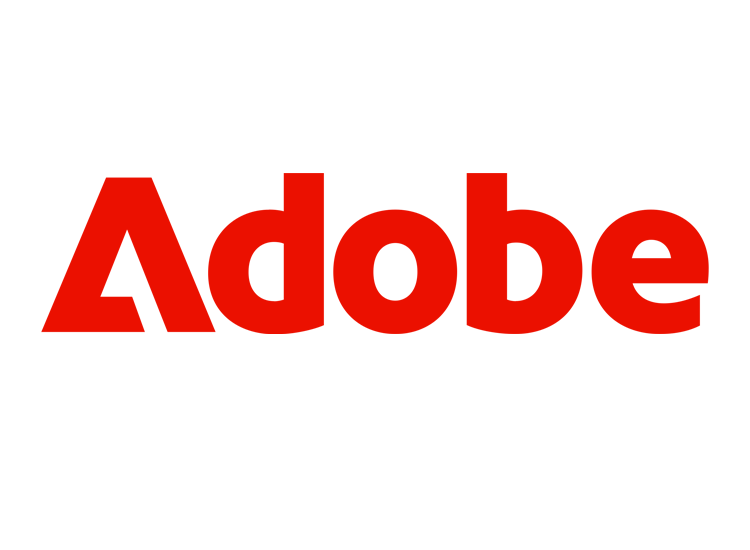 Adobe Logo
Adobe Logo
Click here to download 300dpi images -
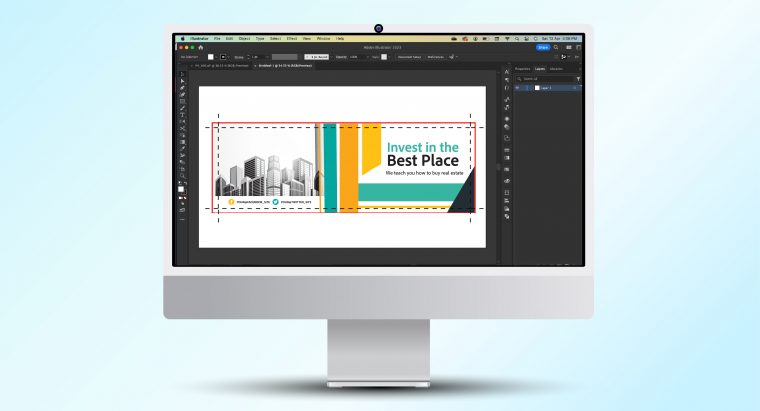 In-RIP Bleed Generation
In-RIP Bleed Generation
Click here to download 300dpi images -
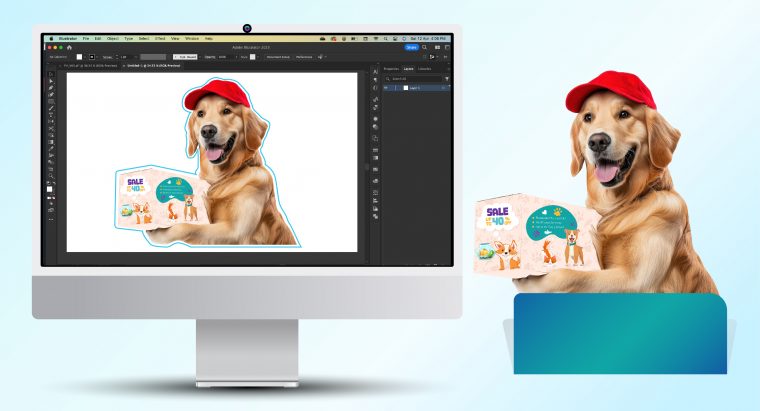 In-RIP Cutline Expansion
In-RIP Cutline Expansion
Click here to download 300dpi images -
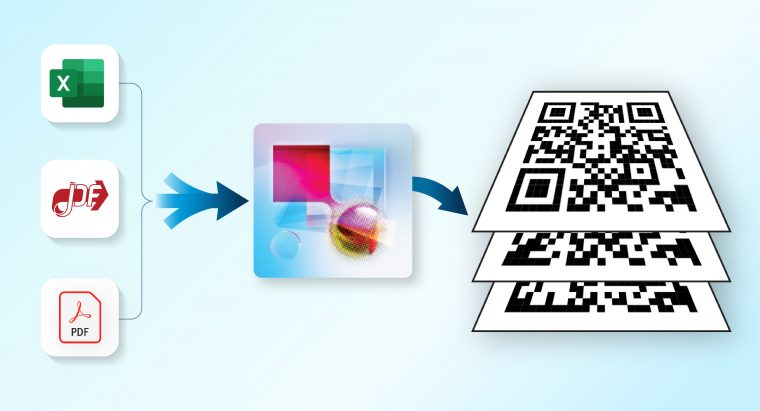 In-RIP Merging of Varaible Product Data
In-RIP Merging of Varaible Product Data
Click here to download 300dpi images -
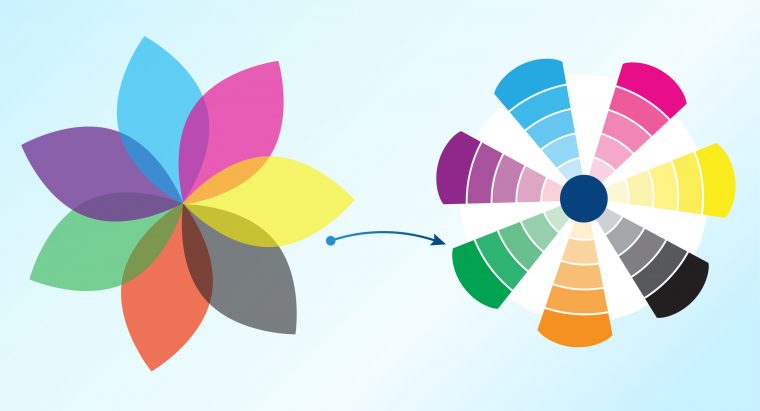 In-RIP Multicolor Transparency Blending
In-RIP Multicolor Transparency Blending
Click here to download 300dpi images -
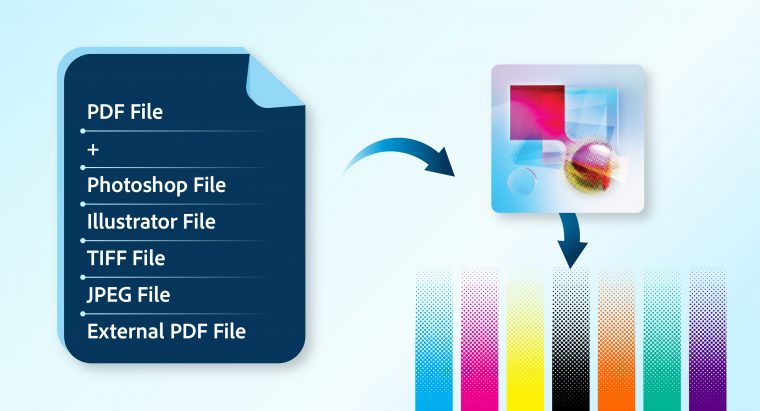 In-RIP Rendering of Photoshop & Illustrator Files
In-RIP Rendering of Photoshop & Illustrator Files
Click here to download 300dpi images -
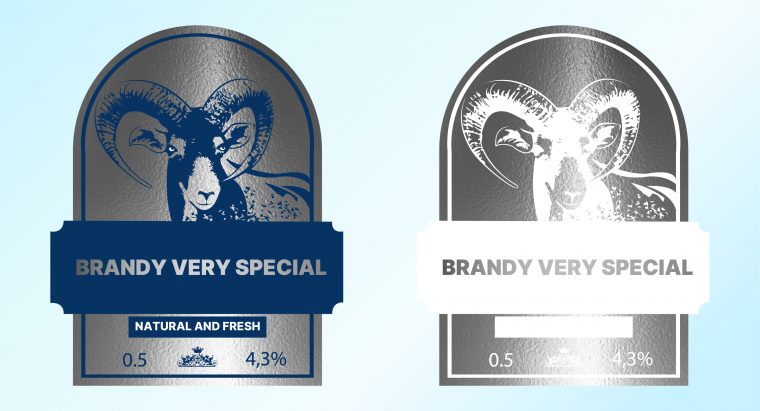 In-RIP White Mask Generation for Printing on Metallic Substrates
In-RIP White Mask Generation for Printing on Metallic Substrates
Click here to download 300dpi images -
 New Performance & Scalability Enhancements
New Performance & Scalability Enhancements
Click here to download 300dpi images
Adobe PDF Print Engine 7 为印前工作流程注入智能化RIP技术
通过将印前智能嵌入光栅图像处理器(RIP),实现生产效率与自动化升级
德国柏林,2025年5月6日 — Adobe今日正式发布Adobe PDF Print Engine第7版。这一新版本包含多项渲染技术创新,已获得多家将Adobe技术集成至印前产品的领先印刷设备制造商(OEM)及RIP解决方案供应商的认可。作为行业性能标杆,新版PDF Print Engine可充分发挥Mercury RIP架构的扩展优势。
简化步骤,智能升级 — PDF Print Engine 7将新功能整合至RIP内部渲染流程,降低对特殊技能的需求,消除独立印前工序。通过将RIP前处理功能与实时渲染相结合,减少人工干预,提升自动化水平,加速生产流程。这些新特性将推动大规模定制印刷、网络印刷提交、数码纺织印花及各类工业与包装工作流程的革新。在PDF技术问世三十周年之际,第7版Print Engine彰显了Adobe持续为全球商业印刷、包装加工及制造企业提供尖端图像技术解决方案的承诺。
Adobe PDF Print Engine 7 新功能详解
- RIP 内多色透明度混合技术
作为业内首创,此功能突破了在扩展色域(ECG)印刷作业中进行透明度混合的技术难点。它支持在含有 CMYK 加任意专色组合(例如橙色、绿色、紫色,即 CMYK+OGV)的印刷机上进行透明度混合与分色处理。包含一个或多个透明元素的作业将充分利用印刷机的色域,呈现更鲜艳生动的图像效果。这一突破性功能将推动多色 ECG 印刷工艺在数字印刷、胶印和柔印等生产方式中的加速应用。
- RIP 内可变数据合并功能
消费品(CPG)制造商需要实现包装的数字连接,以实现防伪溯源与物流追踪。此项新功能可大幅提升产品认证效率,并优化直邮印刷生产流程。通过在 RIP 内实时完成动态数据(如序列号/条形码)与静态 PDF 模板的合并,并同时完成成品拼版,该功能可省去多达两道印前工序,显著缩短处理时间,同时无需生成和管理中间文件。
l IP 内直接渲染 Adobe Photoshop 和 Illustrator 作业文件
使用 Illustrator 和 Photoshop 的设计师有时会以原生文件格式而非 PDF 提交作业。多数商业印刷企业,尤其是来自网络印刷平台的订单,都会接受并欢迎此类文件。如今,印前流程可以省去手动打开设计软件并将文件转换为 PDF 的步骤。该功能基于专有技术构建,可确保每一份作业都具备 Adobe 品质的还原效果。
l RIP 内出血自动生成功能
对于那些需要裁切但提交时图像内容刚好止于裁切线的作业,系统可在渲染阶段自动生成出血区域,无需在 RIP 前进行人工修正。
- RIP 内裁切线扩展功能
对于将在大幅面印刷机上印刷,并通过切割台进行成品加工的作业,系统可自动调整外缘切割线,以考虑切割刀片/旋转刀/激光的厚度、角度和压力,以及基材的柔韧性,从而无需人工进行预处理。
- 用于金属材质印刷的 RIP 内白墨遮罩自动生成功能
设计师在作业中经常使用专色色板来表示具有金属质感的元素,即使整个印刷表面本身就是金属材质。此项新功能基于Print Engine 6的白墨功能,能够根据金属专色版自动生成白墨遮罩,从而减少昂贵白墨的使用面积和用量,降低浪费与成本。该功能无需在图像渲染完成后再进行处理,从而简化了工作流程。
- 全新性能与可扩展性增强
在 PDF Print Engine强大且可扩展架构的基础上,第七代版本引入了多项新优化,充分利用现有硬件资源(包括固态硬盘 SSD),显著提升缓存速度、图像重采样操作效率以及多线程套印处理能力。
上市计划
PDF Print Engine 7 的测试版已于2025年4月向 Adobe print RIP SDK 授权合作伙伴开放测试,最终正式版(Gold Master)将于8月交付。Adobe 预计,行业领先的 OEM厂商 和 RIP 供应商将于2026年陆续发布搭载第七代技术的产品。
新技术预览 ——Adobe Print Services
Adobe 今天在柏林 FESPA 展会上展示了其全新 Adobe 打印服务平台的预发布预览版本。这个由 AI 驱动的新平台将实现 RIP 前转换任务的自动化。将 Adobe 打印服务集成到印前工作流程中,将通过以下领域的一系列“校正、增强和优化”服务,进一步提升 PDF Print Engine 的价值:
l 人工智能与机器学习 —— 一整套由 AI 和机器学习驱动的功能,可对分辨率不足的图像进行智能放大、检测轮廓化文本,并通过智能自配置减少处理负载。
l Adobe 库支持 —— 开放架构,便于访问核心功能。
l 出血生成 —— 通过 Adobe 独有的内容识别填充技术(Content-Aware fill),扩展复杂图案、对角线和照片,进一步增强 Print Engine 7 的 RIP 内出血功能。
l 可变数据印刷 —— 加速直邮和客户个性化信函的印前处理与渲染。
Adobe Print Services将于近期向认证印刷合作伙伴开放。
Adobe高层观点
“Adobe 很高兴将 PDF Print Engine 7的强大创新带给我们的解决方案合作伙伴以及整个印刷行业。”Adobe 印刷业务产品副总裁兼总经理 Naveen Goel 表示,“印刷企业需要在相同时间内处理更多作业。商业印刷厂、包装加工企业商、纺织印花厂商及产品制造商将深切体会到 Adobe Print Service与 Print Engine 7 新功能结合所带来的节省时间与成本的优势。通过PDF Print Engine 7 的 RIP 内集成技术,或通过Adobe Print Service实现自动化,许多印前步骤将被省略。这些 Adobe 创新将进一步提升印刷企业的竞争力,并通过拓展新兴行业领域的机会,帮助他们扩大业务版图。”
-
 Adobe Logo
Adobe Logo
Click here to download 300dpi images -
 RIP 内出血自动生成功能
RIP 内出血自动生成功能
Click here to download 300dpi images -
 RIP 内裁切线扩展功能
RIP 内裁切线扩展功能
Click here to download 300dpi images -
 RIP 内可变数据合并功能
RIP 内可变数据合并功能
Click here to download 300dpi images -
 RIP 内多色透明度混合技术
RIP 内多色透明度混合技术
Click here to download 300dpi images -
 IP 内直接渲染 Adobe Photoshop 和 Illustrator 作业文件
IP 内直接渲染 Adobe Photoshop 和 Illustrator 作业文件
Click here to download 300dpi images -
 用于金属材质印刷的 RIP 内白墨遮罩自动生成功能
用于金属材质印刷的 RIP 内白墨遮罩自动生成功能
Click here to download 300dpi images -
 全新性能与可扩展性增强
全新性能与可扩展性增强
Click here to download 300dpi images
Le moteur d'impression Adobe PDF Print Engine 7 apporte l'intelligence in-RIP aux flux de travail de prépresse
Accélération de la productivité et de l’automatisation grâce à l’intégration de l’intelligence de prépresse dans le RIP (Raster Image Processor ou processeur d’images matricielles)
Berlin, Allemagne – le 6 mai 2025 – Adobe annonce aujourd’hui le lancement de la Version 7 du Adobe PDF Print Engine. La nouvelle version comporte plusieurs innovations au niveau du rendu qui ont déjà été accueillies favorablement par les principaux fabricants de composants d’impression OEM et fournisseurs de solutions RIP qui intègrent la technologie Adobe dans leurs outils de prépresse. Le moteur d’impression PDF Print Engine est le leader du secteur sur le plan des performances, et les nouvelles fonctionnalités peuvent exploiter l’évolutivité de l’architecture Mercury RIP.
Moins d’étapes et des flux de travail plus intelligents – Le PDF Print Engine 7 intègre de nouvelles fonctions dans le processus de rendu (à l’intérieur du RIP), réduisant ainsi le besoin de compétences spécialisées, et éliminant les opérations de prépresse parallèles. Le regroupement des fonctions pré-RIP avec le rendu in-RIP permet de réduire les interventions manuelles, d’accroître l’automatisation et d’accélérer la production. Ces nouvelles capacités vont accélérer l’impression personnalisée à grand volume, la réalisation de travaux de web-to-print, l’impression directe sur vêtement, ainsi qu’une série de flux de travail industriels et d’emballage. Trente ans après l’avènement de l’ère PDF, la Version 7 du moteur d’impression témoigne de l’engagement constant de Adobe à fournir les dernières avancées de la science de l’imagerie aux imprimeurs commerciaux, transformateurs d’emballages et fabricants du monde entier.
Les nouveautés du système Adobe PDF Print Engine 7
· Le mélange d’effets de transparence multicolore in-RIP. Cette fonction, qui est une première dans ce domaine, permet de surmonter les difficultés techniques liées au mélange des effets de transparence pour les travaux d’impression ECG (Expanded Color Gamut – gamme étendue de couleurs). Ce système mélange les effets de transparence et sépare les plaques pour les presses utilisant les encres CMJN ainsi que toute autre association d’encres, comme par exemple, l’orange et/ou le vert et/ou violet (CMJN+OVV). Les travaux dans lesquels figurent un ou plusieurs éléments transparents pourront pleinement optimiser la gamme de presse, ce qui permettra à toutes les images et à tous les graphiques du document d’être plus vifs et d’attirer l’attention. Cette caractéristique révolutionnaire permettra d’accélérer l’adoption de l’impression ECG multicolore pour la production numérique, offset et flexographique.
· La fusion in-RIP des données variables de produits. Les fabricants de produits de grande consommation (CPG) ont besoin d’emballages connectés pour lutter contre la contrefaçon, et suivre la logistique de distribution. Cette nouvelle fonctionnalité va faciliter l’adoption de l’authentification des produits, et la production de publipostages simples. L’exécution de fonctions en temps réel à l’intérieur du RIP – la fusion de contenus dynamiques tels que les numéros de série/codes-barres sur un modèle PDF statique, tout en assurant simultanément la mise en page des pièces uniques qui en résultent – élimine jusqu’à deux séries d’activités prépresse, ce qui réduit considérablement les délais de traitement tout en supprimant la nécessité de générer et de gérer des fichiers intermédiaires.
· Le rendu in-RIP des fichiers de travail Adobe Photoshop et Illustrator. Les graphistes qui utilisent Illustrator et Photoshop soumettent parfois leurs travaux au format natif plutôt qu’au format PDF. La plupart des imprimeurs commerciaux acceptent et accueillent favorablement ce type de travaux, qui proviennent souvent de canaux web-to-print. Les opérations de prépresse peuvent désormais éliminer les étapes manuelles consistant à ouvrir le travail dans l’application de conception et à le convertir au format PDF. Créée à partir de technologies exclusives, cette nouvelle capacité garantira une reproduction de qualité Adobe pour chaque travail.
· La création de fond perdu in-RIP. Dans le cas des travaux qui seront découpés mais qui ont été fournis avec des graphiques qui s’arrêtent à la ligne de découpe, un fond perdu peut être créé dans le cadre de l’étape de rendu, ce qui élimine la nécessité de recourir à des remèdes interactifs pré-RIP.
· L’extension de la ligne de coupe in-RIP. Dans le cas des travaux qui seront imprimés sur une presse grand format et finis sur une table de découpe, la ligne de coupe périmétrique peut être modifiée automatiquement pour tenir compte de l’épaisseur, de l’angle et de la pression de la lame / du rotor / du laser de découpe, ainsi que de la flexibilité du substrat, ce qui élimine la nécessité d’une préparation manuelle.
· La production d’une couche blanche in-RIP pour imprimer sur des substrats métalliques. Les graphistes définissent souvent un échantillon de couleur d’accompagnement pour représenter les éléments d’aspect métallique d’un travail, même si toute la surface d’impression est métallique. Cette nouvelle fonctionnalité s’appuie sur les capacités d’encre blanche de Print Engine 6 pour produire automatiquement une couche d’encre blanche à partir de la plaque de couleur d’accompagnement métallique. Cela permettra de réduire les déchets et les coûts en diminuant la zone couverte et la quantité d’encre blanche onéreuse. Cette fonctionnalité élimine la nécessité d’effectuer cette fonction après le rendu.
· De nouvelles améliorations des performances et de l’évolutivité. S’appuyant sur l’architecture robuste et évolutive du PDF Print Engine, la Version 7 apporte de nouvelles améliorations qui utilisent pleinement le matériel disponible (y compris les SSD) pour augmenter la vitesse de mise en cache, des opérations de ré-échantillonnage d’images et de la capture multi-filaments.
La disponibilité
La version bêta du PDF Print Engine 7 a été mise à la disposition des partenaires de licence Adobe Print RIP SDK en avril, et la version finale Gold Master leur sera fournie en août. Adobe prévoit que les principaux fabricants OEM et fournisseurs de RIP commenceront à proposer des produits fonctionnant avec la version 7 en 2026.
Avant-première de la nouvelle technologie – La plateforme d’impression Adobe Print Services
Le lancement en avant-première de la nouvelle plateforme Adobe Print Services a été présenté aujourd’hui au salon FESPA de Berlin. Cette nouvelle plateforme alimentée par l’IA automatisera les tâches de conversion pré-RIP. L’intégration du système Adobe Print Services dans le flux de production prépresse permettra d’améliorer la valeur de PDF Print Engine en offrant une gamme de fonctions de correction, d’amélioration et d’optimisation dans les domaines suivants :
· Intelligence artificielle (IA) et apprentissage automatique (ML pour Machine Learning) – Un ensemble de fonctionnalités basées sur l’IA et le ML qui permettent de suréchantillonner les images dont la résolution est insuffisante, de détecter le texte qui a été souligné, et de minimiser le processus de traitement grâce à une auto-configuration intelligente.
· Les bibliothèques Adobe – Une architecture ouverte pour faciliter l’accès aux fonctionnalités de base
· La création de fonds perdus – En complément des capacités de fonds perdus in-RIP du Print Engine 7, cette fonction permet d’étendre les motifs complexes, les lignes diagonales et les photographies, grâce à la technologie de remplissage Content-Aware exclusive d’Adobe.
· L’impression de données variables – Ceci permet d’accélérer le traitement prépresse et le rendu des travaux de publipostage et de correspondance avec les clients.
La plateforme Adobe Print Services sera bientôt mise à la disposition des partenaires d’impression d’Adobe.
Ce que dit Adobe
« Adobe se réjouit de pouvoir proposer les puissantes innovations de la Version 7 du moteur d’impression PDF Print Engine à ses partenaires et à l’ensemble du secteur de l’impression », a déclaré Naveen Goel, vice-président Produits et directeur général de l’activité d’impression d’Adobe. « Les imprimeries doivent traiter un plus grand nombre de travaux pendant la même période de temps. Les imprimeurs commerciaux, les transformateurs d’emballages, les imprimeurs de textiles/vêtements et les fabricants de produits bénéficieront d’un gain de temps et d’une réduction des coûts grâce à la plateforme Adobe Print Services associée aux nouvelles fonctionnalités de Print Engine 7. Les étapes de prépresse peuvent être éliminées grâce à l’intégration de in-RIP avec PDF Print Engine 7, ou automatisées avec Adobe Print Services. Ces innovations d’Adobe renforceront l’avantage concurrentiel des imprimeurs, et contribueront à élargir leur horizon commercial en exploitant les possibilités offertes par les nouveaux segments du secteur ».
-
 Adobe Logo
Adobe Logo
Click here to download 300dpi images -
 Génération de saignement en cours d'intervention
Génération de saignement en cours d'intervention
Click here to download 300dpi images -
 Expansion de la ligne de coupe en cours de RIP
Expansion de la ligne de coupe en cours de RIP
Click here to download 300dpi images -
 Fusion In-RIP de données de produits variables
Fusion In-RIP de données de produits variables
Click here to download 300dpi images -
 Mélange de transparence multicolore In-RIP
Mélange de transparence multicolore In-RIP
Click here to download 300dpi images -
 Rendu In-RIP des fichiers Photoshop et Illustrator
Rendu In-RIP des fichiers Photoshop et Illustrator
Click here to download 300dpi images -
 Génération de masques blancs in-RIP pour l'impression sur substrats métalliques
Génération de masques blancs in-RIP pour l'impression sur substrats métalliques
Click here to download 300dpi images -
 Nouvelles améliorations en matière de performances et d'évolutivité
Nouvelles améliorations en matière de performances et d'évolutivité
Click here to download 300dpi images
Adobe PDF Print Engine 7 mit in den RIP integrierten intelligenten Funktionen für Prepress-Workflows
Höhere Produktivität und schnellere Automatisierung durch Integration von Prepress-Intelligenz in den RIP (Raster Image Processor)
Berlin, Deutschland – 6. Mai 2025 – Adobe hat heute die Veröffentlichung der Version 7 seiner Adobe PDF Print Engine bekanntgegeben. Die innovativen Rendering-Funktionen der neuen Version wurden bereits von führenden Druck-OEMs und Anbietern von RIP-Lösungen begrüßt, die Adobe-Technologie in ihre Prepress-Produkte integrieren. Mit den neuen Funktionen kann sich die als branchenführende Technologie anerkannte PDF Print Engine von Adobe die Skalierbarkeit der Mercury RIP Architecture optimal zunutze machen
Weniger Schritte, intelligentere Workflows – PDF Print Engine 7 führt neue Funktionen in die Rendering-Pipeline (im RIP) ein, die den Bedarf an speziellen Fachkenntnissen reduzieren und separate Vorstufenprozesse eliminieren. Die Kombination von Pre-RIP-Funktionen mit In-RIP-Rendering führt zu weniger manuellen Eingriffen, mehr Automatisierung und einer schnelleren Produktion. Die neuen Funktionen ermöglichen eine schnellere Abwicklung von kundenspezifischen High-Volume-Projekten, Web-to-Print- und Direct-to-Garment-Aufträgen sowie einer Vielzahl von industriellen und Verpackungs-Workflows. Dreißig Jahre nach der Einführung des PDF-Formats stellt Adobe mit der Version 7 der Print Engine einmal mehr sein Engagement unter Beweis, kommerziellen Druckereien, Verpackungsherstellern und anderen Anwendern auf der ganzen Welt die fortschrittlichsten Entwicklungen im Bereich der Bildbearbeitungstechnologie verfügbar zu machen.
Was ist neu bei Adobe PDF Print Engine 7?
· Transparenzüberblendung für mehrere Farben im RIP. Diese Branchenneuheit überwindet die komplexen technischen Herausforderungen der Transparenzüberblendung bei ECG-Druckaufträgen (Expanded Color Gamut). Sie mischt Transparenzen und trennt Platten für Druckmaschinen mit CMYK sowie jeder beliebigen Kombination von Druckfarben, z. B. Orange und/oder Grün und/oder Violett (CMYK+OGV). Aufträge, die ein oder mehrere transparente Elemente enthalten, machen sich den gesamten Farbraum der Druckmaschine zunutze, damit alle Bilder und Grafiken lebendiger erscheinen und besser zur Geltung kommen. Diese bahnbrechende Funktion wird zweifellos für den zunehmenden Einsatz des Mehrfarbendrucks mit sieben Druckfarben bei der Digital-, Offset- und Flexo-Produktion sorgen.
· Zusammenführung variabler Produktdaten im RIP. Hersteller von Verbrauchsgütern benötigen Connected Packaging, um Produktfälschungen bekämpfen und Vertriebslogistikprozesse nachverfolgen zu können. Diese neue Funktion wird zu einer schnelleren und verbesserten Produktauthentifizierung beitragen und die Produktion einfacher Direkt Mailings optimieren. Da Echtzeitfunktionen direkt im RIP ausgeführt werden – das Zusammenführen dynamischer Inhalte wie Seriennummern/Barcodes in einer statischen PDF-Vorlage bei gleichzeitigem Step & Repeat der daraus resultierenden Unikate – entfallen bis zu zwei Arbeitsschritte in der Druckvorstufe, was die Bearbeitungszeit erheblich verkürzt und die Erstellung und Verwaltung von Zwischendateien überflüssig macht.
· Rendering von Adobe Photoshop- und Illustrator-Dateien im RIP. Designer, die Illustrator und Photoshop verwenden, reichen ihre Arbeiten manchmal im Originalformat anstatt als PDF ein. Die meisten kommerziellen Druckereien akzeptieren diese Aufträge bereitwillig, häufig über Web-to-Print-Kanäle. Die manuelle Arbeitsschritte wie das Öffnen des Auftrags in der Designanwendung und die Konvertierung in das PDF-Format können jetzt durch Prepress-Prozesse eliminiert werden. Mit den auf proprietären Technologien basierenden neuen Funktionen ist die für Adobe typische Wiedergabequalität bei jedem Auftrag gewährleistet.
· Generierung von Beschnittzugaben im RIP. Bei Druckaufträgen, bei denen ein Beschnitt erforderlich ist, die jedoch mit an der Schnittlinie endenden Grafiken übermittelt wurden, kann während der Rendering-Phase eine Beschnittzugabe erzeugt werden, sodass interaktive Korrekturen vor dem RIP entfallen.
· Erweiterung der Schnittlinie im RIP. Bei Druckaufträgen, die auf einer Großformat-Druckmaschine gedruckt und auf einem Schneidetisch weiterverarbeitet werden sollen, kann die Schnittlinie automatisch entsprechend der Dicke, dem Winkel und dem Druck der Schneidklinge/des Rotors/Lasers sowie der Flexibilität des Substrats angepasst werden, wodurch manuelle Vorbereitungen entfallen.
· Maskenerstellung im RIP für den Druck auf metallischen Substraten. Designer legen häufig ein Sonderfarbfeld fest, damit Elemente mit Metallic-Optik in einem Auftrag hervorgehoben werden, auch wenn die gesamte Druckfläche metallisch ist. Die neue Funktion baut auf den Weißtintenfunktionen der Print Engine 6 auf und generiert automatisch eine Weißmaske aus der Metallic-Sonderfarbplatte. Da die Druckfläche geringer ist und weniger weiße Tinte benötigt wird, werden Abfall und Kosten erheblich reduziert. Dank dieser Funktion muss diese Aufgabe nicht nach dem Rendern ausgeführt werden.
· Verbesserte Leistung und Skalierbarkeit. Die auf der robusten und skalierbaren Architektur der PDF Print Engine aufbauende Version 7 bietet neue Verbesserungen, die die verfügbare Hardware (einschließlich SSDs) voll ausnutzen, um Prozesse wie Caching, Bild-Resampling und Multithread-Trapping schneller auszuführen.
Verfügbarkeit
Die Beta-Version von PDF Print Engine 7 wurde im April für Lizenzpartner des Adobe Print RIP SDK verfügbar gemacht. Die endgültige Gold Master-Edition wird im August an diese Partner ausgeliefert. Adobe geht davon aus, dass führende OEMs und RIP-Anbieter im Jahr 2026 mit der Veröffentlichung von auf Version 7 basierenden Produkten beginnen werden.
Vorschau auf neue Technologien – Adobe Print Services
Eine Vorabversion der neuen Adobe Print Services-Plattform wurde heute auf der FESPA in Berlin vorgestellt. Diese neue KI-gestützte Plattform automatisiert Konvertierungsaufgaben vor dem RIP. Die Integration von Adobe Print Services in den Prepress-Workflow erhöht den Nutzen der PDF Print Engine, da eine Reihe von Korrektur-, Verbesserungs- und Optimierungsservices in den folgenden Bereichen ausgeführt werden:
· KI und maschinelles Lernen – eine Reihe von KI- und ML-gestützten Funktionen zum Upsampling von Bildern mit unzureichender Auflösung, zum Erkennen von umrissenem Text und zur Minimierung des Verarbeitungsaufwands durch intelligente Selbstkonfiguration.
· Adobe-Bibliotheken – offene Architektur für einen leichteren Zugriff auf Kernfunktionen.
· Beschnittgenerierung – ergänzt die InRip-Beschnittfunktionen von Print Engine 7 durch die Erweiterung komplexer Muster, diagonaler Linien und Fotos mithilfe der proprietären inhaltsbasierten Fülltechnologie.
· Variabler Datendruck – beschleunigt die Prepress-Bearbeitung und das Rendering von Direkt Mailings und Kundenkorrespondenz.
Adobe Print Services werden demnächst für Adobe Print-Partner verfügbar sein.
Zitat von Adobe
„Adobe freut sich, seinen Solution Partnern und der gesamten Druckbranche die leistungsstarken, innovativen Funktionen der PDF Print Engine Version 7 zugänglich zu machen“, sagt Naveen Goel, Vice President of Products und General Manager für Drucklösungen bei Adobe. „Druckereien müssen immer mehr Aufträge bearbeiten, obwohl ihnen nicht mehr Zeit zur Verfügung steht. Kommerzielle Druckereien, Verpackungshersteller, Textil-/Bekleidungsdruckereien und Produkthersteller werden die Zeit- und Kostenvorteile der Adobe Print Services-Plattform sowie die neuen Funktionen von Print Engine 7 zweifellos zu schätzen wissen. Durch die In-RIP-Integration mit PDF Print Engine 7 können Prepress-Prozesse eliminiert oder mit Adobe Print Services automatisiert werden. Diese Innovationen von Adobe werden Druckereien dabei helfen, sich einen Wettbewerbsvorteil zu verschaffen und ihre Geschäftsmöglichkeiten zu erweitern, da sie sich Chancen in neuen Branchensegmenten erschließen können.
-
 Adobe Logo
Adobe Logo
Click here to download 300dpi images -
 In-RIP-Bleed-Generierung
In-RIP-Bleed-Generierung
Click here to download 300dpi images -
 In-RIP-Schnittlinienerweiterung
In-RIP-Schnittlinienerweiterung
Click here to download 300dpi images -
 In-RIP-Zusammenführung von variablen Produktdaten
In-RIP-Zusammenführung von variablen Produktdaten
Click here to download 300dpi images -
 In-RIP-Multicolor-Transparenzüberblendung
In-RIP-Multicolor-Transparenzüberblendung
Click here to download 300dpi images -
 In-RIP-Rendering von Photoshop- und Illustrator-Dateien
In-RIP-Rendering von Photoshop- und Illustrator-Dateien
Click here to download 300dpi images -
 In-RIP-Erzeugung weißer Masken für den Druck auf metallischen Substraten
In-RIP-Erzeugung weißer Masken für den Druck auf metallischen Substraten
Click here to download 300dpi images -
 Neue Leistungs- und Skalierbarkeitsverbesserungen
Neue Leistungs- und Skalierbarkeitsverbesserungen
Click here to download 300dpi images
Adobe PDF Print Engine 7 integra l'intelligenza in-RIP nei flussi di lavoro prestampa
Accelerare la produttività e l’automazione incorporando l’intelligenza prestampa all’interno del RIP (Raster Image Processor)
Berlino, Germania — 6 maggio 2025 — Adobe ha annunciato oggi il lancio della versione 7 di Adobe PDF Print Engine. La nuova versione include numerose innovazioni di rendering che sono già state accolte con favore dai principali fornitori di soluzioni OEM e RIP per la stampa che integrano la tecnologia Adobe nei propri prodotti di prestampa. PDF Print Engine è il leader nel settore in termini di prestazioni e le nuove funzionalità sfruttano la scalabilità dell’architettura Mercury RIP.
Meno passaggi, flussi di lavoro più intelligenti – PDF Print Engine 7 integra nuove funzionalità nelle opzioni di rendering (all’interno del RIP), riducendo la necessità di disporre di competenze specializzate ed eliminando le operazioni di prestampa separate. Combinando le funzioni pre-RIP con il rendering in-RIP è possibile ridurre il numero di interazioni manuali e ottenere una maggiore automazione e una produzione più rapida. Queste nuove funzionalità consentiranno di accelerare la stampa personalizzata ad alto volume, l’invio di lavori web-to-print, la stampa diretta su tessuto e una serie di flussi di lavoro industriali e di imballaggio. Dopo trent’anni dall’avvento dell’era del PDF, la versione 7 di Print Engine dimostra l’impegno costante di Adobe volto a mettere a disposizione di stampatori commerciali, trasformatori di imballaggi e produttori a livello mondiale i più recenti progressi compiuti dalla scienza dell’imaging.
Nuove funzionalità di Adobe PDF Print Engine 7
· Alpha blending multicolore all’interno del RIP. Questa funzione, una novità assoluta nel settore, consente di superare i difficili ostacoli tecnici dell’alpha blending per i lavori di stampa ECG (Expanded Color Gamut). Combina i vari livelli di trasparenza e separa le lastre per le macchine da stampa con CMYK e qualsiasi combinazione di inchiostri, ad esempio arancione e/o verde e/o viola (CMYK+OGV). I lavori che contengono uno o più elementi trasparenti sfrutteranno appieno la gamma cromatica della macchina da stampa, consentendo a tutte le immagini e alla grafica del lavoro di apparire più vivaci e accattivanti. Questa caratteristica innovativa contribuirà ad accelerare l’adozione della stampa ECG multicolore per la stampa digitale, offset e flessografica.
· Fusione in-RIP dei dati variabili del prodotto. I produttori di beni di consumo confezionati (CPG) hanno bisogno di imballaggi connessi per combattere la contraffazione e tracciare la logistica distributiva. Questa nuova funzionalità contribuirà ad accelerare l’adozione dell’autenticazione dei prodotti e a snellire la produzione di semplici soluzioni di direct mailing. L’esecuzione di funzioni in tempo reale all’interno del RIP – la fusione di contenuti dinamici quali numeri di serie/codici a barre su un modello PDF statico, eseguendo simultaneamente la duplicazione (step-and-repeat) dei pezzi unici risultanti – elimina fino a due serie di attività di prestampa, riducendo significativamente i tempi di elaborazione ed eliminando la necessità di generare e gestire file intermedi.
· Rendering in-RIP dei file di lavoro di Adobe Photoshop e Illustrator. I designer che utilizzano Illustrator e Photoshop a volte inviano i lavori in formato nativo anziché in PDF. La maggior parte degli stampatori commerciali accetta e accoglie con favore questi lavori, spesso provenienti da canali web-to-print. Le operazioni di prestampa possono eliminare i passaggi manuali di apertura del lavoro nell’applicazione di progettazione e di conversione in PDF. Realizzata con tecnologie proprietarie, la nuova funzionalità garantisce una riproduzione di ogni lavoro all’insegna della qualità tipica di Adobe.
· Generazione di abbondanze in-RIP. Per i lavori che verranno rifilati, ma che sono stati inviati con grafica che non va oltre la linea di rifilatura, è possibile generare un’immagine al vivo durante la fase di rendering, eliminando la necessità di ricorrere a rimedi interattivi pre-RIP.
· Espansione della linea di taglio in-RIP. Per i lavori che verranno stampati su una macchina per grandi formati e rifiniti su un tavolo da taglio, la linea di taglio perimetrale può essere modificata automaticamente per tenere conto dello spessore, dell’angolo e della pressione della lama/del rotore/del laser da taglio e della flessibilità del supporto, eliminando la necessità di svolgere attività di preparazione manuale.
· Generazione di maschere bianche in-RIP per la stampa su supporti metallici. I progettisti spesso definiscono un campione di tinte piatte per rappresentare elementi dall’aspetto metallico in un lavoro, anche quando l’intera superficie di stampa è metallica. La nuova funzione si basa sulle funzionalità di inchiostro bianco di Print Engine 6 per generare automaticamente una maschera di inchiostro bianco dalla lastra per tinte piatte metalliche. Questo consente di ridurre al minimo gli sprechi e i costi riducendo l’area di copertura e la quantità del costoso inchiostro bianco. Questa funzionalità elimina la necessità di eseguire questa operazione dopo il rendering.
· Nuovi miglioramenti in termini di prestazioni e scalabilità. Sfruttando l’architettura robusta e scalabile di PDF Print Engine, la versione 7 introduce nuovi miglioramenti che sfruttano appieno l’hardware disponibile (comprese le unità SSD) per aumentare la velocità della cache e migliorare le operazioni di ricampionamento delle immagini e il trapping in multithreading.
Disponibilità
La versione beta di PDF Print Engine 7 è stata messa a disposizione dei partner di stampa con contratto di licenza per le tecnologie RIP SDK di Adobe ad aprile e l’edizione finale Gold Master sarà distribuita a questi ultimi nel mese di agosto. Adobe prevede che i fornitori OEM e di RIP leader del settore inizieranno a rilasciare prodotti basati sulla versione 7 nel 2026.
Anteprima della nuova tecnologia – Adobe Print Services
Un’anteprima pre-lancio della nuova piattaforma Adobe Print Services è stata presentata oggi in occasione della fiera FESPA a Berlino. Questa nuova piattaforma basata sull’intelligenza artificiale consentirà di automatizzare le attività di conversione pre-RIP. L’integrazione di Adobe Print Services nel flusso di lavoro prestampa aumenterà il valore di PDF Print Engine eseguendo una serie di servizi di correzione, miglioramento e ottimizzazione negli ambiti riportati di seguito.
· IA e apprendimento automatico – una suite di funzionalità basate sull’intelligenza artificiale e sull’apprendimento automatico che consentono di aumentare le dimensioni delle immagini (ricampionamento) con risoluzione insufficiente, di rilevare il testo che è stato delineato e di ridurre al minimo le spese fisse di elaborazione grazie all’autoconfigurazione intelligente.
· Librerie Adobe – Architettura aperta per un accesso più semplice alle funzionalità principali
· Generazione di abbondanze – Integra le funzionalità di abbondanza all’interno del RIP di Print Engine 7 ampliando motivi complessi, linee diagonali e fotografie, utilizzando la tecnologia di riempimento Content-Aware proprietaria di Adobe.
· Stampa dati variabili – Accelera l’elaborazione prestampa e il rendering dei lavori di direct mailing e di corrispondenza con i clienti.
Adobe Print Services sarà disponibile per i partner di stampa Adobe nel prossimo futuro.
Citazione di Adobe
“Adobe è lieta di offrire le potenti innovazioni della versione 7 di PDF Print Engine ai propri partner a livello di soluzioni e all’intero settore della stampa”, ha dichiarato Naveen Goel, Vice President of Products e direttore generale del settore stampa di Adobe. “Gli stampatori hanno bisogno di elaborare più lavori nello stesso periodo di tempo. Gli stampatori commerciali, i trasformatori di imballaggi, gli operatori che stampano su tessuti/capi di abbigliamento e i fabbricanti potranno sfruttare i vantaggi in termini di risparmio di tempo e di costi offerti dalla piattaforma Adobe Print Services, in combinazione con le nuove funzionalità di Print Engine 7″. Le fasi di prestampa possono essere eliminate, grazie all’integrazione in-RIP, con PDF Print Engine 7 o automatizzate con Adobe Print Services. Queste innovazioni di Adobe renderanno più incisivo il vantaggio competitivo degli stampatori e contribuiranno ad allargare gli orizzonti aziendali, sfruttando le opportunità offerte da nuovi segmenti di settore”.
-
 Adobe Logo
Adobe Logo
Click here to download 300dpi images -
 Generazione di emorragia in-RIP
Generazione di emorragia in-RIP
Click here to download 300dpi images -
 Espansione della linea di taglio in-RIP
Espansione della linea di taglio in-RIP
Click here to download 300dpi images -
 Unione in-RIP dei dati dei prodotti varaibili
Unione in-RIP dei dati dei prodotti varaibili
Click here to download 300dpi images -
 Miscelazione di trasparenza multicolore in-RIP
Miscelazione di trasparenza multicolore in-RIP
Click here to download 300dpi images -
 Rendering in-RIP di file di Photoshop e Illustrator
Rendering in-RIP di file di Photoshop e Illustrator
Click here to download 300dpi images -
 Generazione di maschere bianche in-RIP per la stampa su substrati metallici
Generazione di maschere bianche in-RIP per la stampa su substrati metallici
Click here to download 300dpi images -
 Nuovi miglioramenti in termini di prestazioni e scalabilità
Nuovi miglioramenti in termini di prestazioni e scalabilità
Click here to download 300dpi images
Adobe PDF Print Engine 7 integra funciones inteligentes en el RIP para optimizar los flujos de trabajo de preimpresión
Impulsa la productividad y la automatización integrando funciones de preimpresión directamente en el procesador de imágenes rasterizadas (RIP)
En Berlín (Alemania), a 6 de mayo de 2025 — Adobe ha anunciado hoy el lanzamiento de Adobe PDF Print Engine 7, la nueva versión de su potente tecnología de procesamiento de impresión. Esta actualización incorpora innovaciones de renderizado que ya están despertando un gran interés en los principales fabricantes de impresoras (OEM) y proveedores de soluciones RIP que integran tecnología Adobe en sus productos de preimpresión. PDF Print Engine se mantiene líder del sector en rendimiento, y sus nuevas funciones aprovechan al máximo la escalabilidad de la arquitectura Mercury RIP.
Menos pasos, flujos de trabajo más inteligentes: PDF Print Engine 7 integra nuevas funciones directamente en el flujo de renderizado (dentro del RIP), reduciendo la necesidad de conocimientos técnicos especializados y eliminando procesos de preimpresión independientes. Al combinar funciones previas al RIP con el renderizado integrado, se minimizan las intervenciones manuales, se incrementa la automatización y se acelera la producción. Estas nuevas funcionalidades beneficiarán a los flujos de impresión personalizados y de alto volumen, a los pedidos web-to-print, a la impresión directa sobre prendas, así como a aplicaciones industriales y de embalajes. Más de treinta años después del nacimiento del PDF, esta versión reafirma el compromiso de Adobe con la innovación en tecnologías de imagen para impresores comerciales, fabricantes y convertidores de embalajes en todo el mundo.
Novedades de Adobe PDF Print Engine 7
· Fusión de transparencias multicolor dentro del RIP: esta función es una primicia en la industria que resuelve los complejos desafíos técnicos de la fusión de transparencias en trabajos de impresión con una gama e colores ampliada (Expanded Color Gamut, ECG). La fusión permite mezclar transparencias y separar planchas para prensas que utilizan CMYK más cualquier combinación adicional de tintas, como naranja, verde y/o violeta (CMYK+OGV). Los trabajos que incluyan uno o más elementos transparentes podrán aprovechar al máximo la gama de la prensa, logrando que todas las imágenes y gráficos luzcan más vivos y llamativos. Esta innovación acelerará la adopción de la impresión multicolor ECG en procesos digitales, offset y flexográficos.
· Fusión de datos variables dentro del RIP: los fabricantes de bienes de consumo envasados (CPG) requieren embalajes conectados para combatir la falsificación y gestionar la trazabilidad logística. Esta nueva función acelerará la adopción de sistemas de autenticación de productos y optimizar la producción de correo directo simple. Al realizar funciones en tiempo real dentro del RIP, como fusionar contenido dinámico (números de serie, códigos de barras, etc.) sobre una plantilla estática en PDF y al mismo tiempo posicionar automáticamente las copias únicas resultantes, se eliminan hasta dos procesos de preimpresión, reduciendo significativamente el tiempo de procesamiento y evitando la creación y gestión de archivos intermedios.
· Renderizado dentro del RIP de archivos nativos de Adobe Photoshop e Illustrator: muchos diseñadores entregan trabajos en formato nativo (.PSD o .AI) en lugar de PDF, especialmente en canales web-to-print. La mayoría de las imprentas comerciales ya aceptan estos formatos. Ahora, los equipos de preimpresión pueden evitar el paso manual de abrir estos archivos en sus aplicaciones originales para convertirlos a PDF. Esta nueva capacidad, desarrollada con tecnologías propietarias de Adobe, garantiza una reproducción fiel y con calidad profesional de cada trabajo.
· Generación de sangrado dentro del RIP: para los trabajos que requieren recorte, pero fueron entregados con los gráficos justo en la línea de corte, ahora es posible generar el sangrado automáticamente durante la fase de renderizado, eliminando la necesidad de ajustes interactivos antes del RIP.
· Expansión de líneas de corte dentro del RIP: en trabajos impresos en prensas de gran formato que se recortan en mesas de corte, el RIP puede ajustar automáticamente la línea de corte perimetral para tener en cuenta el grosor, ángulo y presión de la cuchilla, rotor o láser, así como la flexibilidad del sustrato. Esto evita tener que hacer ajustes previos antes del corte.
· Generación de máscara blanca dentro del RIP para impresión sobre sustratos metálicos: a menudo, los diseñadores asignan un color directo específico para representar elementos metálicos, incluso cuando toda la superficie de impresión es metálica. Esta nueva función, basada en las capacidades de tinta blanca de la versión 6, permite generar automáticamente una máscara de tinta blanca a partir de esa plancha de color directo metálico. Esto reduce el área de cobertura y el consumo de esta tinta costosa, reduciendo el desperdicio y los costos. Además, esta automatización elimina la necesidad de llevar a cabo esta tarea una vez finalizado el renderizado.
· Nuevas mejoras de rendimiento y escalabilidad: aprovechando la arquitectura sólida y escalable de PDF Print Engine, la versión 7 incorpora mejoras que permiten utilizar al máximo el hardware disponible (incluidos discos SSD), acelerando los procesos de caché, remuestreo de imágenes y tramado multihilo.
Disponibilidad
La versión beta de Adobe PDF Print Engine 7 se puso a disposición de los socios con licencia SDK en abril. La versión final (Gold Master) estará disponible en agosto. Adobe prevé que los principales fabricantes y proveedores de RIP empiecen a lanzar productos con esta tecnología en 2026.
Vista previa de la tecnología Adobe Print Services
Hoy, en la FESPA Berlín, Adobe presentó una vista previa de su nueva plataforma Adobe Print Services, impulsada por inteligencia artificial. Esta solución de última generación está diseñada para automatizar tareas previas al RIP, optimizando los flujos de trabajo de preimpresión. Al integrarse con PDF Print Engine, Adobe Print Services amplía su valor al ofrecer una serie de servicios de corrección, mejora y optimización en las siguientes áreas clave:
· IA y aprendizaje automático (Machine Learning):
un conjunto de funciones impulsadas por IA y ML que permite mejorar imágenes con resolución insuficiente, detectar texto vectorizado (trazado) y reducir la carga de procesamiento mediante una configuración automática inteligente.
· Bibliotecas Adobe: arquitectura abierta que facilita el acceso a funciones fundamentales del ecosistema Adobe.
· Generación de sangrado: complementa las capacidades internas del RIP de la versión 7, extendiendo patrones complejos, líneas diagonales y fotografías mediante la tecnología exclusiva de relleno inteligente (Content-Aware) de Adobe.
· Impresión de datos variables: agiliza la preimpresión y el renderizado de campañas de correo directo y comunicaciones personalizadas.
Adobe Print Services estará disponible próximamente para los socios de impresión de Adobe.
Declaración de Adobe
«Teníamos muchas ganas de poder ofrecer las innovaciones de la versión 7 de PDF Print Engine a nuestros socios tecnológicos y a toda la industria gráfica», afirmó Naveen Goel, Vicepresidente de Productos y Director General del área de impresión de Adobe. «Las imprentas ahora necesitan procesar más trabajos en menos tiempo. Las impresoras comerciales, convertidores de embalajes, impresores textiles y fabricantes podrán obtener un importante ahorro de tiempo y costos gracias a Adobe Print Services, combinados con las nuevas funcionalidades de Print Engine 7. Las tareas de preimpresión pueden eliminarse mediante la integración en el RIP o automatizarse con Adobe Print Services. Estas innovaciones ayudarán a nuestros clientes a consolidar su ventaja competitiva y a explorar nuevas oportunidades en segmentos emergentes del mercado».
-
 Adobe Logo
Adobe Logo
Click here to download 300dpi images -
 Generación de hemorragias durante el disparo
Generación de hemorragias durante el disparo
Click here to download 300dpi images -
 Ampliación de la línea de corte en RIP
Ampliación de la línea de corte en RIP
Click here to download 300dpi images -
 Fusión en RIP de datos de productos variables
Fusión en RIP de datos de productos variables
Click here to download 300dpi images -
 Mezcla de transparencias multicolor en RIP
Mezcla de transparencias multicolor en RIP
Click here to download 300dpi images -
 Renderizado en RIP de archivos de Photoshop e Illustrator
Renderizado en RIP de archivos de Photoshop e Illustrator
Click here to download 300dpi images -
 Generación de máscara blanca en RIP para impresión en sustratos metálicos
Generación de máscara blanca en RIP para impresión en sustratos metálicos
Click here to download 300dpi images -
 Nuevas mejoras de rendimiento y escalabilidad
Nuevas mejoras de rendimiento y escalabilidad
Click here to download 300dpi images

